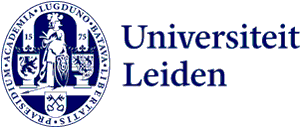
Archaeology students play important role in visit indigenous Ka’apor people
As part of Mariana Françozo’s BRASILAE project, a group of representatives of the Ka’apor people was invited to visit Leiden. The Ka’apor, an indigenous people from Brazil, are some of the present-day relatives of the Tupi-speaking peoples who used to live in the northeastern region of Brazil, claimed by the West Indian Company as Dutch colony (1630-1654).
Knowledge
The knowledge of the Tupi indigenous peoples of local flora and fauna heavily influenced the writing of the book Historia Naturalis Brasiliae, published in 1648, as well as museum collections in the Netherlands and Europe more broadly. A group of Leiden students helped prepare for their visit.
Representation of indigenous peoples
Student Feline Bogert explains: ‘We looked at the inventories and databases of ethnological and anthropological museums to create an overview of all the traces of these groups of indigenous peoples. Creating this database helped us get an idea of how culture is represented in museums in other parts of the world. The object descriptions, information on collectors, and choices of what objects to show in their exhibitions gave insight into how these objects travelled across continents, and how the museums approached the inventorying and displaying of the artefacts. After all, how these groups and cultures are represented in museums, greatly affects how they will be seen by people all over the world.’

Bridge between cultures
This database was then presented to the Ka’apor delegation. Venelin Kolev, another student involved in the project: ‘This workshop presented us with the exciting opportunity to meet and discuss our research with the people to whom these objects had meanings and purposes we could have never imagined, a whole life beyond the display cases and storage shelves. Such collaboration did not just fill in knowledge gaps, it was also a bridge between our cultures.’
Separated from their stories
The experience was a moving one for the students involved. ‘It was beautiful (and even emotional) to experience such groundbreaking progress in connecting the Ka’apor with their material culture, dispersed across museums all over the world.’ Venelin states. ‘According to Valdemar Ka’apor [chief of the Ka’apor people and a member of the delegation], their objects are dead here, separated from their stories, but back in their home, the same objects still exist, and they are alive. Our job as researchers should be about bringing these objects back to life, some through repatriation, others through exhibiting them with their original, full context, as told by the indigenous people. Hopefully, this workshop will inspire more collaborative projects in the future and raise awareness about the injustices indigenous people and the Amazon Rainforest face to this day.’
